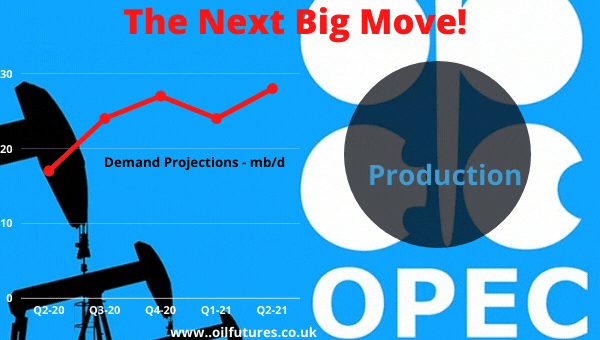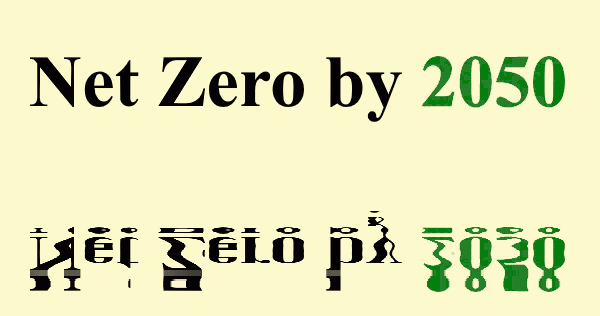The crude oil price is on the rise again and the
markets hope that there will not be an over-supply in the event of OPEC+
deciding to increase the production in August – and in unison. The request made by the Russian oil minister for pushing
back the meeting on the grounds of ‘ presidential commitme…
Wednesday, 30 June 2021
Tuesday, 29 June 2021
OPEC+ Meeting: output hike is very likely!
Crude oil markets have been anxious ahead of the
OPEC+ meeting, perhaps, anticipating an increase in output by the member
nations. The natural inertia, given the current crude oil
price, is to let it stay where it is by justifying it on the ground of covering
past losses and getting the investment …
Monday, 28 June 2021
Oil Price: did the crude oil markets react to the US air strikes?
The price of crude oil fell on Monday morning in the
Asian markets, which may show cascading effect in the European markets too during
the day. The early market reaction is not something expected;
it is most probably a knee-jerk reaction to the air strikes carried out by the
US in Iraq and Syria, ta…
Sunday, 27 June 2021
CCS: Carbon Capturing and Storage – major challenges remain unsolved
Ever since the lofty ambition of achieving net zero
emission by 2050 came about, it has been gathering momentum at an impressive
rate year-on-year in the realm of global politics. Since we are not left with many options to minimize
the CO 2 emissions, unless we ditch the use of fossil
fuels altoget…
Friday, 25 June 2021
OPEC+ position amidst rising crude oil price
With the rising crude oil price, the OPEC+ is once
again under an intense spotlight in the run up to its next monthly meeting, scheduled
to be on July 1. In the past, although the suspense had been building
for weeks before such meetings, the outcome turned out to be neither dramatic
nor exciting; m…
Thursday, 24 June 2021
Oil Price rises with the fall of crude oil inventories, both in the US and Germany
The gradual rise in price of crude oil continues on Thursday,
further buoyed by the latest data from the EIA, indicating a sharp drop in US
crude inventories. In fact, the drop exceeded analysts’ expectations. It
means the recovery of demand is on track and irreversible with the engine of
growth ste…
Wednesday, 23 June 2021
Prospects of reviving the Iranian nuclear deal fades away; OPEC+ is back under spotlight
The prospects of a success in reviving the JCPOA,
2015 Iranian nuclear deal, is slowly turning into a desert mirage, keeping a
grand audience of investors, traders, analysts and of course and of course, men
and women in the street in a state of confusion; it’s not a spectacle to watch
that in turn …
Monday, 21 June 2021
Oil price rises: demand breeds dynamism, eclipsing political factors
The price of crude oil gained momentum at the
weekend again, as the possibility of a deal being struck during the sixth round
of talks among the signatories of the 2015 Iran nuclear deal in Vienna,
Austria, diminished. The talks, however, are going to resume in a few
days’ time after the teams invol…
Sunday, 20 June 2021
Reviving the 2015 Iran Nuclear Deal: there will be 7th round of talks
According to the Iranian Deputy Foreign Minister,
Abbas Araghchi, all Joint Comprehensive Plan of Action (JCPOA) agreement
documents were almost ready. He said it on Sunday after the end of the sixth
round of talks. He, however, added, “but it requires decisions that
mainly have to be made by the ne…
Friday, 18 June 2021
Psychological booster for crude oil markets: covid-19 infections in India in decline
The crude oil price dipped on Thursday and it was solely
attributed to the weaker-than-expected US economic data that in turn made the
US dollar stronger. The mood in the markets was not lifted up, even
after a relatively successful summit between President Biden and President
Putin in Switzerland; …
Wednesday, 16 June 2021
Significant Crude Oil Inventory Draw Predicted: oil price keeps rising
The API, American Petroleum Institute, in its latest
forecast, indicates a significant crude oil draw for the week ending June 10. The
same from the EIA, the US Energy Information Administration, is yet to be
released for the same period. The API figure, 8.573 million barrels, is more than
twice wha…
Tuesday, 15 June 2021
Rate of oil price surge: will the politicians get involved again to cap the price?
The price of crude oil is steadily rising and its
ceiling, if any, is anybody’s guess at present, because getting a perfect
prediction by analysing past data, by means of an Excel spreadsheet or the ‘best’
available ML algorithm, is like predicting the exact date and ferocity of the
first Atlantic …
Monday, 14 June 2021
Iran forms trilaterals, and quadrilaterals with its neighours to woo investment in energy sector
As the talks to revive the 2015 nuclear deal enters
the sixth round in Vienna, Austria, involving the signatories to the deal, Iran
does not seem to have lost its hope for
the sanctions being lifted, despite the mixed signals that come from Tehran. There are plenty of indications to support the idea
…
Sunday, 13 June 2021
India sees normalcy returning; rise in oil price causes a political stir, though
India, having been through one of the deadliest
outbreaks of the Coronavirus in the world, is finally seeing a steady decline,
both in the rate of infections and deaths. In proportion to the encouraging news, the
commercial activities are slowly limping back to normal, despite being nowhere
near wha…
Subscribe to:
Posts (Atom)
Search for Articles
Popular Posts
-
A curious paradox unfolded in the oil market this week: despite growing anxieties over a looming military conflict between the two nuclear...
-
In an unexpected move on Saturday, the core members of OPEC+ declared plans to increase oil production by 411,000 barrels per day starting ...
-
The energy markets are currently jittery as tensions escalate between nuclear-armed South Asian neighbours India and Pakistan, moving beyond...
-
www.oilfutures.co.uk As the military standoff between India and Pakistan subsided, thanks to President Trump's intervention, the oil mar...
TOP CATEGORIES
Featured Post
Labels
Crude Oil Prices
(508)
Global Politics & Energy
(508)
Crude Oil Prices
(37)
featured
(7)
Gas Prices
(519)
Global Politics & Energy
(50)
Oil & Gas Market Analysis
(549)
Blog Archive
-
▼
2021
(261)
-
▼
June
(23)
- Oil prices rise desptie the uncertainties surround...
- OPEC+ Meeting: output hike is very likely!
- Oil Price: did the crude oil markets react to the ...
- CCS: Carbon Capturing and Storage – major challeng...
- OPEC+ position amidst rising crude oil price
- Oil Price rises with the fall of crude oil invento...
- Prospects of reviving the Iranian nuclear deal fad...
- Oil price rises: demand breeds dynamism, eclipsing...
- Reviving the 2015 Iran Nuclear Deal: there will be...
- Psychological booster for crude oil markets: covid...
- Significant Crude Oil Inventory Draw Predicted: oi...
- Rate of oil price surge: will the politicians get ...
- Iran forms trilaterals, and quadrilaterals with it...
- India sees normalcy returning; rise in oil price c...
- Oil prices rise again following the false dawn: 50...
- Rising oil price is becoming a hot political issue...
- Vienna talks on 2015 Iran nuclear deal have hit a ...
- Oil price falls on Monday on account of negative s...
- Crude Oil Price: OPEC+ members are anxious about t...
- Saudi Arabia raises oil price for Asia, citing dem...
- Oil price rises with talks over 2015 Iranian nucle...
- Saudi Energy Minister pokes fun at speculators: "D...
- Oirl price rises: Iran's entry into markets vs OPE...
-
▼
June
(23)




















